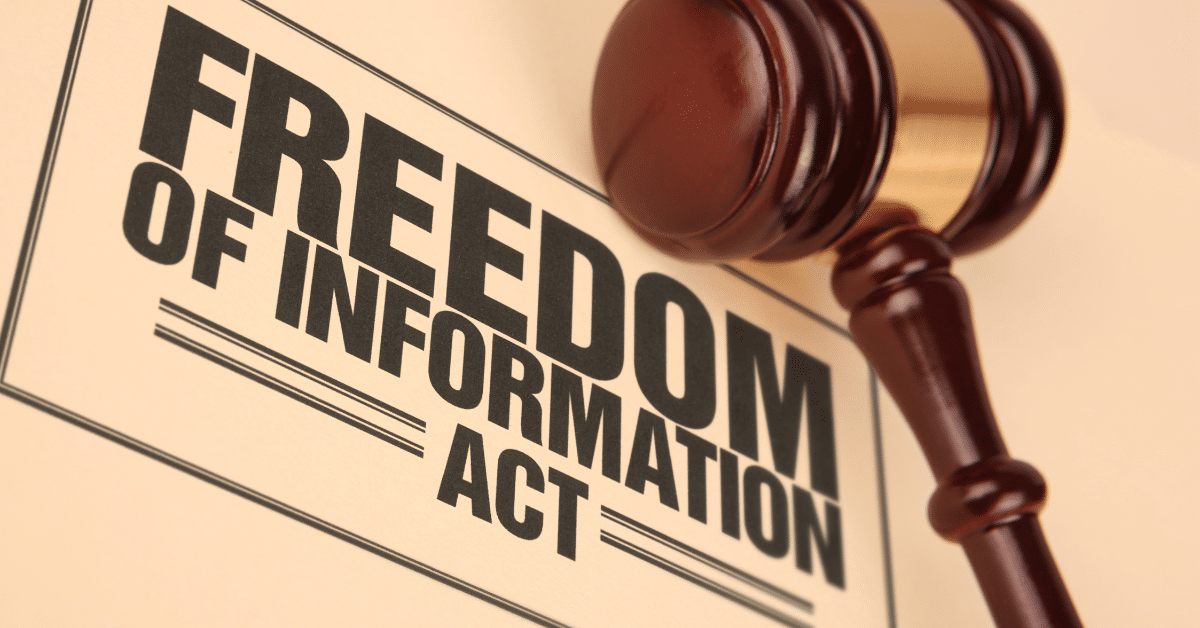
How to Write a Freedom of Information Act (FOIA) Request
Submitting a Freedom of Information Act (FOIA) request can be an empowering way to access important information held by government agencies. By understanding how to craft a clear and effective request, you can increase the likelihood of receiving the documents you seek.
Learn how to exercise your rights via a FOIA request in the on-demand webinar below:
Here’s a step-by-step guide to help you write a successful FOIA request:
1. Identify the Information You Need
Before you begin writing, clearly define the information you are seeking. Be as specific as possible about the records you want, including dates, subjects, and types of documents. This specificity will help the agency locate the records more efficiently.
2. Determine the Correct Agency
Identify the government agency that is most likely to have the records you need. Each agency has a designated FOIA office, and it is crucial to send your request to the correct one to avoid delays. (i.e. the Governor’s office, or the Council on Environmental Quality)
3. Gather Contact Information
Find the contact details for the agency’s FOIA office. This information is usually available on the agency’s official website. Make note of the mailing address, email address, or online submission portal.
4. Use a Formal Tone
When drafting your request, use a formal and polite tone. Begin with a respectful salutation, such as “Dear FOIA Officer,” and clearly state that you are making a request under the Freedom of Information Act. You can view a past example of one of Wild Virginia’s FOIA’s here.
5. Specify the Records
In the body of your request, clearly describe the records you are seeking. Include as much detail as possible, such as:
- Description: A brief summary or title of the documents.
- Timeframe: The specific period for which you need the records.
- Details: Any other pertinent details that will help identify the records.
6. Mention the FOIA
Explicitly mention the Freedom of Information Act in your request to emphasize your legal right to access the information.
7. Request a Fee Waiver (if applicable)
If you believe you qualify for a fee waiver, include a request for it in your letter. To request a fee waiver for a FOIA request, you must show that disclosure of the requested information is in the public interest, likely to contribute significantly to public understanding of government operations, and is not primarily for the commercial interest of the requester.
8. Provide Contact Information
Include your full contact information so the agency can reach you. This should include your name, address, phone number, and email address.
9. Sign Your Request
Conclude your request with a formal closing, such as “Sincerely,” followed by your signature (if submitting by mail) and typed name.
10. Submit Your Request
Send your completed request to the appropriate agency using the method specified on their website. Keep a copy for your records and note the date of submission.
By following these steps, you can craft a well-structured FOIA request that is more likely to yield the information you need. All records held by our government belong to us and agencies have a duty to make them available in almost all cases. Remember, persistence and clarity are key when navigating the FOIA process.